Best Bottles for Breastfed Babies: Top Choices, Tips, and Glass Options
For many new parents, finding the best bottles for breastfed babies can be a game-changer. Whether you’re transitioning between breastfeeding and bottle-feeding or looking to supplement with expressed milk, the right bottle can make a big difference. In this guide, we’ll explore the top options, why glass bottles are a great choice, and how to choose the ideal bottle for your breastfed baby.
Why Finding the Right Bottle Matters
For breastfed babies, switching between breast and bottle can be a tricky process. They’re used to the flow, feel, and closeness of breastfeeding, so introducing a bottle that closely mimics this experience can help reduce nipple confusion and maintain a smooth feeding routine. The right bottle can also support healthy feeding habits, prevent gas, and make feeding time enjoyable for both you and your baby.
Key Features to Look for in Bottles for Breastfed Babies
When looking for the best bottle for your breastfed baby, consider the following factors:
- Nipple Shape and Flow: Bottles with nipples that resemble the breast are often preferred for breastfed babies. Look for a wide, rounded nipple base that mimics the natural shape of the breast. It’s also essential to choose a slow-flow nipple to better match the natural pace of breastfeeding.
- Anti-Colic Features: Babies who switch between breast and bottle are sometimes more prone to gas and colic. Anti-colic venting systems, either built into the nipple or the bottle itself, can help reduce the amount of air the baby swallows, preventing digestive discomfort.
- Material: While plastic bottles are lightweight and convenient, many parents prefer glass bottles for their safety and durability. Glass bottles don’t contain harmful chemicals like BPA and often last longer than plastic alternatives.
- Size and Weight: Smaller, lighter bottles are easier for babies to handle. For breastfed babies, who typically take smaller, more frequent feeds, a 4-5 oz bottle can be a good starting size.
- Ease of Cleaning: Bottles with fewer parts are generally easier to clean, a feature that becomes increasingly important when balancing the demands of a newborn.
Top Choices: Best Bottles for Breastfed Babies (Including Glass Options)
Here’s a rundown of some top-rated bottles that cater specifically to breastfed babies.
1. Dr. Brown’s Natural Flow Options+ Glass Baby Bottles
Why It’s Great for Breastfed Babies:
Dr. Brown’s bottles are well-known for their advanced anti-colic venting system, which is perfect for breastfed babies who may be prone to gas and reflux. The Options+ bottles come with a slow-flow nipple designed to mimic the breastfeeding experience.
Features:
- Made of durable borosilicate glass that’s heat-resistant
- Includes an internal vent system to reduce colic and gas
- Available in various sizes, including a small 4-ounce option for younger babies
- BPA-free and easy to clean
Pros:
- Reduces colic and gas symptoms
- Mimics the natural breastfeeding flow
- High-quality glass material that’s durable and eco-friendly
Cons:
- May be slightly heavier than plastic options
- The vent system requires a bit more cleaning
2. Philips Avent Natural Glass Bottle
Why It’s Great for Breastfed Babies:
Philips Avent’s Natural line is designed with wide, breast-shaped nipples to make the transition from breast to bottle seamless. The glass version offers a safer, more environmentally friendly alternative to plastic, and the ergonomic shape makes it easy for both parents and babies to hold.
Features:
- Made from high-quality glass, free from BPA
- Wide breast-shaped nipple for easy latching
- Advanced anti-colic valve to reduce discomfort
- Available in various sizes with flow options
Pros:
- Easy for babies to latch onto due to the natural nipple shape
- Anti-colic features reduce gas and fussiness
- Durable and chemical-free glass construction
Cons:
- Slightly heavier than plastic bottles
- Higher price point than some plastic alternatives.
3. Comotomo Natural Feel Baby Bottle
Why It’s Great for Breastfed Babies:
The Comotomo bottle is designed to closely resemble the breast, with a soft, squeezable silicone body and a wide, breast-shaped nipple. It’s a popular choice among breastfeeding moms due to its unique design that makes it easy for babies to transition between breast and bottle.
Features:
- Soft, squeezable silicone body
- Wide, breast-shaped nipple to mimic breastfeeding
- Dual anti-colic vents to reduce gas and colic
- Easy to clean with minimal parts
Pros:
- Excellent for reducing nose confusion
- Lightweight and easy to hold
- Durable and free from harmful chemicals
Cons:
- Not glass, but made from safe silicone
- Limited flow options for older babies
4. Tommee Tippee Closer to Nature Glass Baby Bottles
Why It’s Great for Breastfed Babies:
Tommee Tippee’s Closer to Nature line offers bottles with soft, breast-like nipples that make it easier for babies to latch and reduce nipple confusion. The glass version is an excellent choice for eco-conscious parents who want a bottle that’s safe and durable.
Features:
- Made from safe, heat-resistant glass
- Unique nipple design that promotes a natural latch
- Anti-colic valve to reduce air intake
- Available in slow, medium, and fast flow options
Pros:
- Baby-friendly nipple design helps ease bottle transitions
- Glass construction is eco-friendly and chemical-free
- Sturdy, ergonomic shape
Cons:
- May be heavier for younger babies to hold independently
- Higher price compared to plastic bottles
5. MAM Easy Start Anti-Colic Bottle
Why It’s Great for Breastfed Babies:
MAM’s Easy Start bottle is designed with an ultra-soft nipple that closely resembles the breast, making it easier for breastfed babies to switch between bottle and breastfeeding. The anti-colic system is built into the base, which helps prevent air from entering the milk.
Features:
- Anti-colic vented base to reduce gas and colic
- Ultra-soft nipple designed to mimic breastfeeding
- BPA-free and available in multiple sizes
- Self-sterilizing feature for easy cleaning
Pros:
- Great for babies prone to colic
- Nipple shape helps prevent nipple confusion
- Self-sterilizing makes it convenient for on-the-go parents
Cons:
- Not a glass option, but BPA-free plastic
- Required assembly due to the vented base
6. Evenflo Balance Plus Wide Neck Glass Bottle
Why It’s Great for Breastfed Babies:
- Best for: Babies who need a slow flow to prevent overfeeding
- Features: With a wide neck and a slow-flow nipple, this bottle helps babies avoid gulping milk too quickly. The tempered glass is durable and easy to clean, and the wide neck design reduces the risk of air intake.
- Pros: Durable glass, easy to clean, slow flow
- Cons: Only available in one size, heavier than plastic
7. NUK Simply Natural Glass Baby Bottle
Why It’s Great for Breastfed Babies:
- Best for: Babies with a hard time latching onto standard nipples
- Features: With a multiple-hole nipple design that mimics the natural breastfeeding flow, this bottle provides a comfortable, natural-feeling latch. The glass option is durable, safe, and eco-friendly.
- Pros: Multiple nipple holes for natural flow, strong glass material
- Cons: Limited flow options for older babies
8. Lansinoh Momma Breastmilk Feeding Bottle
Why It’s Great for Breastfed Babies:
- Best for: Babies transitioning between breast and bottle frequently
- Features: This bottle includes a NaturalWave nipple designed to allow babies to use the same tongue movement as breastfeeding. The nipple is soft and flexible, closely resembling the feel of the breast.
- Pros: Reduces nipple confusion, helps preserve natural feeding technique
- Cons: Not available in glass; may be harder to find
Why Consider Glass Bottles for Your Breastfed Baby?
Choosing glass bottles can offer many advantages, especially for parents who prioritize safety, durability, and environmental responsibility.
1. Safe and Chemical-Free
Glass bottles are naturally BPA-free, and you won’t have to worry about harmful chemicals leaching into your baby’s milk. They’re often made from borosilicate glass, which is heat-resistant and can withstand temperature changes without breaking.
2. Durable and Long-Lasting
Glass bottles, when treated carefully, can last much longer than plastic ones. They’re resistant to discoloration and scratching, which can keep them looking new for longer and make them an ideal option for reuse with multiple children.
3. Easier to Clean
Unlike plastic, glass doesn’t hold onto odors or residue, which can make it easier to clean. Many parents find that glass bottles stay cleaner and are less prone to harboring bacteria.
4. Eco-Friendly
Glass is 100% recyclable and biodegradable, making it a more sustainable choice for eco-conscious parents. By choosing glass, you’re reducing plastic waste and supporting a healthier environment for future generations.
Tips for Choosing the Right Bottle for Your Baby
- For Colic-Prone Babies: Bottles with anti-colic systems, like Dr. Brown’s or MAM, can make a big difference.
- For Glass Options: Philips Avent Natural Glass, Dr. Brown’s Glass, and Evenflo Balance Plus are excellent choices.
- For Breast-Like Feel: Bottles like Comotomo and Tommee Tippee offer softer, wide nipples that make the transition easier.
Tips for Transitioning from Breastfeeding to Bottle-Feeding
- Start Slowly: Introduce the bottle gradually. Start with one feeding per day, ideally when your baby is calm and hungry but not overly tired or fussy.
- Choose the Right Time: It’s often recommended to wait until breastfeeding is well established (around 3–4 weeks) before introducing a bottle. However, every baby is different, so consult your pediatrician if you have concerns.
- Let Someone Else Give the First Bottle: Babies are often more willing to take a bottle from someone other than mom, as they associate mom with breastfeeding. Having a partner or family member offer the first few bottles can ease the transition.
- Warm the Milk: Breastfed babies are accustomed to warm milk, so warming the bottle to body temperature can make it more familiar and comforting.
- Be Patient: Transitioning can take time. If your baby initially resists the bottle, try different bottle types, nipple shapes, and feeding times to see what works best.
Summery
Choosing the best bottle for a breastfeeding baby involves finding the right combination of nipple shape, flow, material, and anti-colic features. Glass baby bottles are a fantastic option for parents seeking a safe, eco-friendly, and durable feeding solution, and they offer the added peace of mind of being free from harmful chemicals.
By starting with the right bottle and taking the transition slow, you can create a positive feeding experience for your baby while supporting their natural feeding habits. Whether you go with a trusted brand like Dr. Brown’s or try an innovative bottle like Comotomo, finding the perfect bottle can help make feeding time smoother, easier, and more enjoyable for both you and your baby.
FAQs: Best Bottles for Breastfed Babies
1. Why do breastfed babies need special bottles?
Breastfed babies are used to the natural feel, flow, and pace of breastfeeding. Special bottles for breastfed babies mimic these features with breast-shaped nipples, slower flow, and anti-colic vents. This can help prevent nipple confusion and make it easier for the baby to transition between breast and bottle.
2. What is nipple confusion, and how can it be prevented?
Nipple confusion occurs when a baby has difficulty switching between breastfeeding and bottle-feeding due to differences in shape, texture, or flow. To reduce this, choose a bottle with a nipple that resembles the breast shape and has a slower flow rate to match breastfeeding.
3. Why are glass bottles recommended for breastfed babies?
Glass bottles are naturally free of chemicals like BPA, BPS, and phthalates, which are sometimes found in plastics. They are also more durable, resistant to odors and stains, and environmentally friendly. Many parents feel that glass offers a safer, more sustainable choice for their baby.
4. Are glass bottles safe for babies to use?
Yes, most glass baby bottles are made from tempered or borosilicate glass, which is highly durable and can withstand drops or sudden temperature changes. Some glass bottles also have silicone sleeves that add an extra layer of protection and make them easier for babies to grip.
5. Do anti-colic bottles really help reduce gas and discomfort?
Anti-colic bottles are designed with special venting systems that reduce the amount of air a baby swallows while feeding. This can help prevent gas, colic, and reflux, making feedings more comfortable for babies.
6. Can I alternate between breast and bottle-feeding without affecting breastfeeding?
Yes, with the right bottle and approach, you can successfully alternate between breast and bottle. To reduce the risk of nipple confusion, introduce a bottle gradually and choose one with a breast-like nipple and slow flow. Also, it’s best to wait until breastfeeding is established (around 3–4 weeks) before introducing the bottle.
7. How do I clean glass baby bottles?
Glass bottles are generally easier to clean than plastic, as they don’t retain odors or stains. The majority of glass bottles are safe to use in the dishwasher and can be sterilized by boiling them. Always follow the manufacturer’s cleaning recommendations for optimal results, particularly for any silicone or plastic parts.
8. Are there any downsides to using glass bottles?
The main downsides are that glass bottles are slightly heavier and can break if dropped on a hard surface, though many glass baby bottles are designed to withstand minor drops. Silicone sleeves can provide added protection and grip.
9. When should I replace my baby bottle’s nipple?
Over time, bottle nipples can become worn and need replacement. If you notice signs of wear like thinning, discoloration, or a faster flow, it’s time to replace them. Otherwise, it’s generally recommended to replace bottle nipples every 2–3 months.
10. What’s the best way to warm milk in a glass bottle?
You can warm milk by placing the glass bottle in a bowl of warm water or using a bottle warmer. Avoid microwaving, as it can cause uneven heating and hot spots and can break down the nutrients in breast milk.
11. What bottle size should I start with for my newborn?
For newborns, a 4-5 oz bottle is usually sufficient. As your baby grows, you can gradually move to larger bottle sizes as needed. Smaller bottles are easier for young babies to handle, and they’re perfect for frequent, smaller feedings typical of breastfeeding.
12. Are there specific nipples or flow rates for breastfed babies?
Yes, many bottles designed for breastfed babies come with slow-flow nipples, which better mimic the natural flow of breastfeeding. Starting with a slow-flow nipple can help avoid overwhelming your baby with milk, making it easier for them to adapt to the bottle.
13. Can I use these bottles for both formula and breast milk?
Absolutely. Bottles for breastfed babies can be used for formula, breast milk, or a mix. Just be sure to clean and sterilize them as needed between uses.
14. How many bottles should I buy if I’m breastfeeding and bottle-feeding?
For occasional bottle-feeding, 2-3 bottles should be enough. If you’re regularly alternating between breast and bottle, consider having 6–8 bottles on hand to avoid frequent washing.
15. What if my baby rejects the bottle?
Some babies may need time to adjust. Try offering the bottle at different times or when your baby isn’t overly hungry or fussy. Sometimes, having another caregiver offer the bottle instead of the breastfeeding parent can help with acceptance. Trying different nipple shapes and flows may also make a difference.
16. How long can breast milk stay in a glass bottle?
According to most guidelines, freshly pumped breast milk can stay at room temperature for 4–6 hours, in the refrigerator for up to 4 days, and in the freezer for 6–12 months. Once warmed, use the milk within 1–2 hours and do not refreeze.
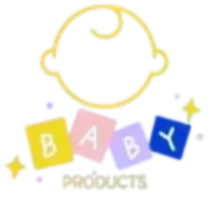
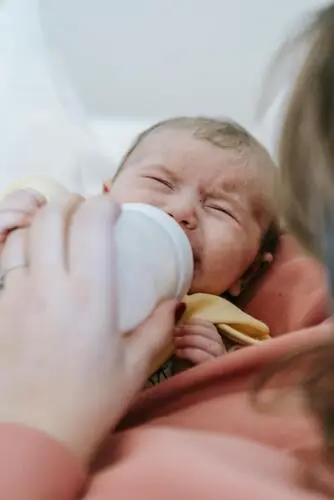

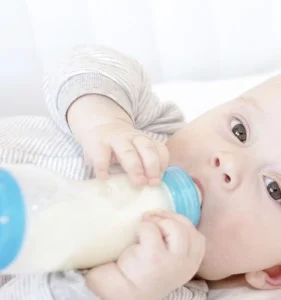



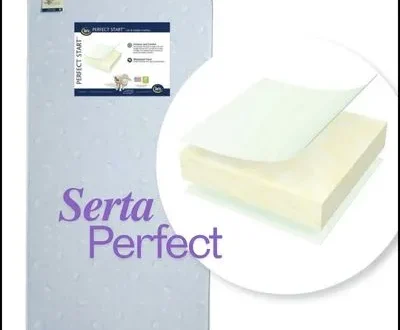
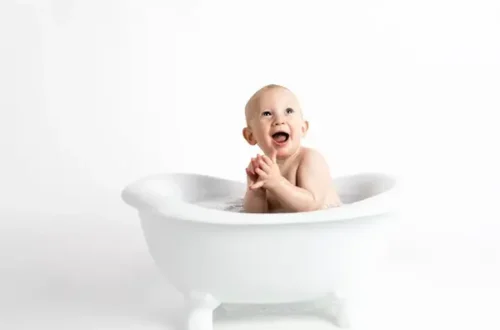
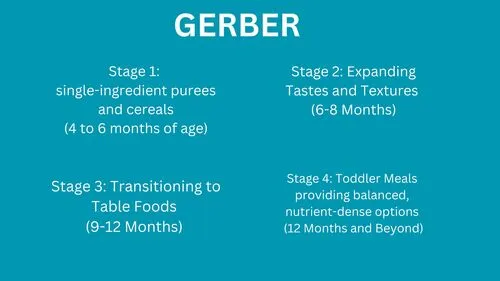
hello!,I like your writing very much! share we communicate more about your article on AOL? I require a specialist on this area to solve my problem. May be that’s you! Looking forward to see you.
Hello! Thank you so much for your kind words—I’m glad you enjoyed my writing. I’d be happy to discuss the article further and see how I might assist you. Feel free to reach out to me on AOL or let me know another convenient way to connect. Looking forward to hearing from you!
I truly appreciate this post. I have been looking everywhere for this! Thank goodness I found it on Bing. You’ve made my day! Thank you again
I’m so glad to hear that you found what you were looking for! 😊 It’s always rewarding to know the content is helpful. Thank you for your kind words, and I’m here anytime you need more insights or information. You’ve made my day too!
Would you be considering exchanging links?
Thank you for the offer! Exchanging links can be a great way to build connections and drive mutual growth. If you have a website or platform related to similar topics, feel free to share more details about it, and I’d be happy to explore the possibility! 😊
Hello there, You’ve done an excellent job. I will definitely digg it and personally suggest to my friends. I’m confident they will be benefited from this web site.